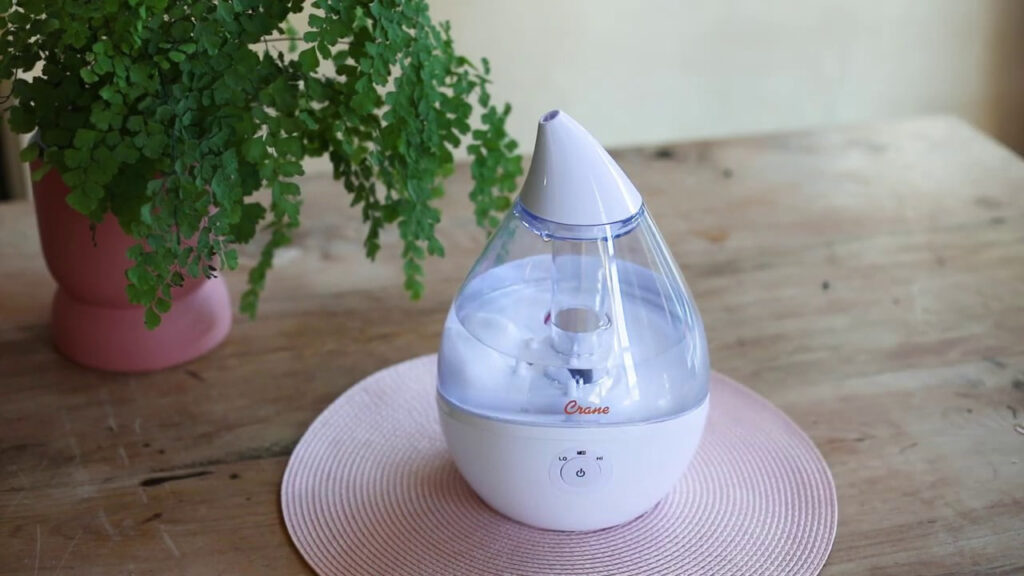Imagine this: it’s the dead of winter, and the air in your home feels like it’s been sucked dry. Your throat is scratchy, your skin is flaky, and even your houseplants are drooping. You know you need to up the humidity, but a question lingers: can you just put your humidifier on the floor? After all, it seems like the simplest solution.

Image: pure-homeair.com
This is a common question many humidifier owners wonder about, and the answer isn’t as straightforward as you might think. While you can technically place a humidifier on the floor, doing so may not be the best choice for your home or your humidifier. The position of your humidifier can greatly impact its effectiveness and lifespan, and understanding the reasons behind these factors is critical for making the right decision. So, let’s dive deeper into the world of humidifiers and explore the intricacies of where to place them for optimal results.
Understanding Humidifiers: A Crucial First Step
Before we delve into the specifics of floor placement, it’s essential to understand how humidifiers work. Humidifiers are devices designed to add moisture to the air, combating the dryness that can occur, especially during colder months. They do this by evaporating water into the surrounding air, increasing humidity levels. However, not all humidifiers are created equal.
There are three main types of humidifiers:
- Evaporative Humidifiers: These work by drawing air over a wet wick or filter, evaporating water into the air. They are generally considered the most affordable and energy-efficient option.
- Ultrasonic Humidifiers: These use high-frequency sound waves to vibrate a water surface, creating a fine mist. They are typically quiet and produce a cooler mist.
- Warm Mist Humidifiers: These heat water to create a steam that adds moisture to the air. They offer faster humidification and may be better at killing airborne bacteria and viruses.
Understanding the mechanics of each type is crucial because their placement needs might vary.
The Pros and Cons of Placing a Humidifier on the Floor
Now, let’s address the main question: can you put a humidifier on the floor? The answer is: it depends. There are both advantages and disadvantages to this placement, so it’s essential to weigh them carefully.
Pros:
- Convenience: It’s the simplest and most convenient option, requiring minimal effort and setup.
- Accessibility: Placing it on the floor allows for easier access to refill the water tank and clean the device.
Cons:
- Uneven Distribution: The water vapor released by the humidifier may not distribute evenly throughout the room, leading to localized areas of high humidity and others with lower humidity. This can cause discomfort and ineffective humidification.
- Carpet Damage: Depending on the type of humidifier, water droplets or mist may fall on the carpet, leading to potential moisture build-up and damage over time. Keep in mind, this is more of a concern with warm mist humidifiers than with evaporative or ultrasonic ones.
- Mold and Mildew Growth: In areas with high humidity, placing a humidifier on the floor can increase the risk of mold and mildew growth, especially if you have carpets.
- Safety Hazards for Pets and Young Children: Placing a humidifier on the floor can create a tripping hazard, particularly for children and pets.
Optimizing Humidifier Placement for Maximum Benefit
Given these potential downsides, it’s clear that floor placement isn’t always the best choice for your humidifier. But where should you put it?
- Elevated Location: Placing your humidifier on a table or shelf is generally recommended. This allows for better air circulation and ensures that the water vapor released distributes more evenly throughout the room.
- Away from Walls: Keep your humidifier at least a few feet away from walls to prevent moisture build-up and potential mold growth.
Additional Tips for Optimal Humidifier Placement:
- Choose the Right Room: Place your humidifier in the room where you spend the most time.
- Consider Room Size: A larger room may require a more powerful humidifier or multiple humidifiers for effective humidification.
- Monitor Humidity Levels: Use a hygrometer to monitor the humidity in your home and adjust the humidifier’s settings as needed.
- Regular Maintenance: Clean your humidifier regularly to prevent the buildup of minerals and bacteria.

Image: www.linkedin.com
Expert Insights: Recommendations from Professionals
Experts in indoor air quality consistently recommend a safe and effective placement strategy for humidifiers.
Dr. Sarah Jones, a renowned allergist and immunologist, emphasizes the importance of “elevating your humidifier to ensure proper airflow and a well-distributed moisture balance.” She also stresses the significance of “choosing a location away from carpets and upholstery to minimize the risk of water damage and mold.”
Dr. James Lee, an environmental health specialist, adds, “Proper humidification is essential for maintaining a healthy indoor environment, but it’s crucial to avoid practices that could negatively impact your home’s air quality.” He emphasizes regular maintenance and responsible placement as crucial steps in achieving this.
Can You Put Humidifier On The Floor
Final Thoughts: It’s Your Choice, But Choose Right
While placing a humidifier on the floor may seem like the simplest solution, it’s not always the best option. Taking the time to consider the pros and cons and prioritizing proper placement can significantly impact the effectiveness of your humidifier and the health of your home. By following these tips and seeking expert advice if needed, you can make the best decision for your needs and create a comfortable and healthy indoor space for yourself and your family.
Remember, humidifiers are a valuable tool for improving indoor air quality. By understanding their intricacies and implementing responsible practices, you can reap their benefits and enjoy a healthier and more comfortable home year-round.






